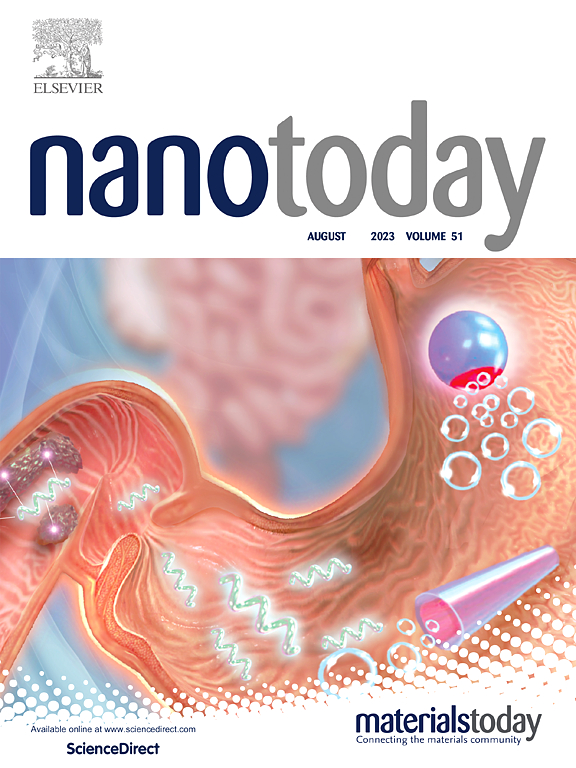Hafnium oxide-based sensitizer with radiation-triggered cuproptosis for radiotherapy
IF 13.2
1区 材料科学
Q1 CHEMISTRY, MULTIDISCIPLINARY
引用次数: 0
Abstract
Advanced sensitizers hold significant clinical importance in improving precise tumor radiotherapy while minimizing harm to normal tissues. In our work, the HfO2-based radiosensitizer (ES@HM-HfO2:Cu) is developed, in which Cu ions are doped in the shell of the HfO2 nanocapsules, and elesclomol (ES), the Cu ionophore, is filled in the hollow mesoporous structure. Following the X-ray irradiation, ES@HM-HfO2:Cu nanocapsules with high-energy deposition effect enable precise and controllable release of Cu ions within the tumor to trigger cuproptosis, exerting dual sensitization outcomes. Consequently, the ES@HM-HfO2:Cu, leveraging the advantage of cuproptosis activation, achieves a tumor inhibition rate of 77.9 % with no apparent toxicity. Notably, the cuproptosis induced by the released Cu ions from ES@HM-HfO2:Cu nanocapsules under X-ray irradiation reinforces the sensitization of HM-HfO2 by promoting mitochondrial lipoylated protein aggregation and iron-sulfur cluster protein loss. Hence, the innovative HfO2-based radioenhancer achieves intensified radiosensitization through X-ray-responsive cuproptosis, offering profound medical implications for advancing clinical radiotherapy.
求助全文
约1分钟内获得全文
求助全文
来源期刊

Nano Today
工程技术-材料科学:综合
CiteScore
21.50
自引率
3.40%
发文量
305
审稿时长
40 days
期刊介绍:
Nano Today is a journal dedicated to publishing influential and innovative work in the field of nanoscience and technology. It covers a wide range of subject areas including biomaterials, materials chemistry, materials science, chemistry, bioengineering, biochemistry, genetics and molecular biology, engineering, and nanotechnology. The journal considers articles that inform readers about the latest research, breakthroughs, and topical issues in these fields. It provides comprehensive coverage through a mixture of peer-reviewed articles, research news, and information on key developments. Nano Today is abstracted and indexed in Science Citation Index, Ei Compendex, Embase, Scopus, and INSPEC.
 求助内容:
求助内容: 应助结果提醒方式:
应助结果提醒方式:


